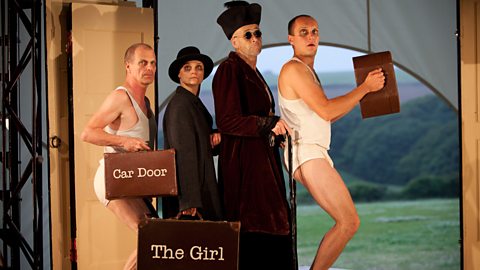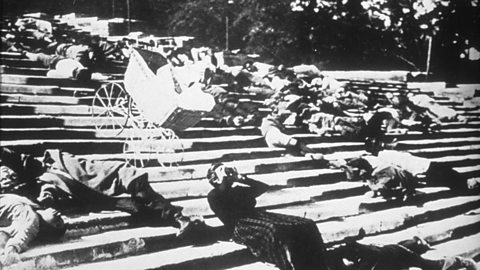Other Brechtian devices
Song and dance
This is a good way to ensure that the audience sees the theatre and are reminded of the fact they are watching a play. Often in Brechtian theatre the style of the music and the lyrics jar, they donāt seem to fit together in style. This distances the audience further.
Itās worth listening to the song āMack the Knifeā from The Threepenny Opera by Brecht and Kurt Weil. Notice how the musical arrangement and melody are upbeat and joyous, yet the lyrics are sinister and dark. This is a very Brechtian approach. One of the most famous lines from this work would still appeal to a modern audience: Who is the bigger criminal: he who robs a bank or he who founds one?
Kneehigh Theatreās production, The Red Shoes, employed several Brechtian techniques, such as song and dance, a narrator figure, placards and multi-role casting.

Montage
It's no accident that montage is a term that weād more readily associate with cinema. Brecht consciously borrowed the idea from silent movies. A montage is a series of short self-contained scenes grouped immediately after each other whose juxtaposition or contrast highlights the important issues with absolute clarity. This idea of separate scenes also allows for a focus on minute details if the situation of the play demands it. Brecht was influenced by the film director Sergei Eisenstein's greatest demonstration of the power of montage in the āOdessa Stepsā sequence of his 1925 film, Battleship Potemkin. In the famous sequence involving a runaway baby carriage, Eisenstein uses montage to arouse emotion and create suspense.
